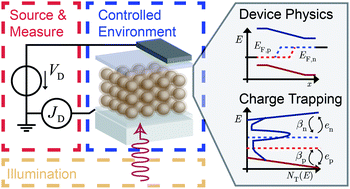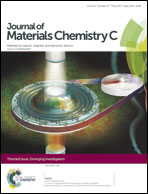Electrical characterization of nanocrystal solids
Abstract
Here we provide a primer for correctly selecting and implementing optoelectronic characterization techniques on semiconductor nanocrystal solids and choosing the appropriate models with which to interpret the data. We discuss the two most fundamental device architectures incorporating a solid composed of solution-processed semiconductor nanocrystals: the metal–semiconductor–metal diode and the heterojunction diode, and the broad classes of techniques that can be used to analyse them including quasi-static (e.g. current–voltage), harmonic (e.g. admittance spectroscopy), and transient measurements. We then separately address the models that are commonly applied to understand the semiconductor behaviour including the Shockley diode equation and capacitance-based analyses such as Mott–Schottky and Shockley–Read–Hall models and potential pitfalls in their application. We additionally highlight methods to extract the density and position of trap states, located in the band gap of these semiconductors and which play an important role in device performance. Due to its interest as an absorptive material for third generation solar cells, we discuss the techniques and analysis in the context of PbS nanocrystal solids and provide reference values for this material throughout the text.

- This article is part of the themed collection: Emerging Investigators

 Please wait while we load your content...
Please wait while we load your content...